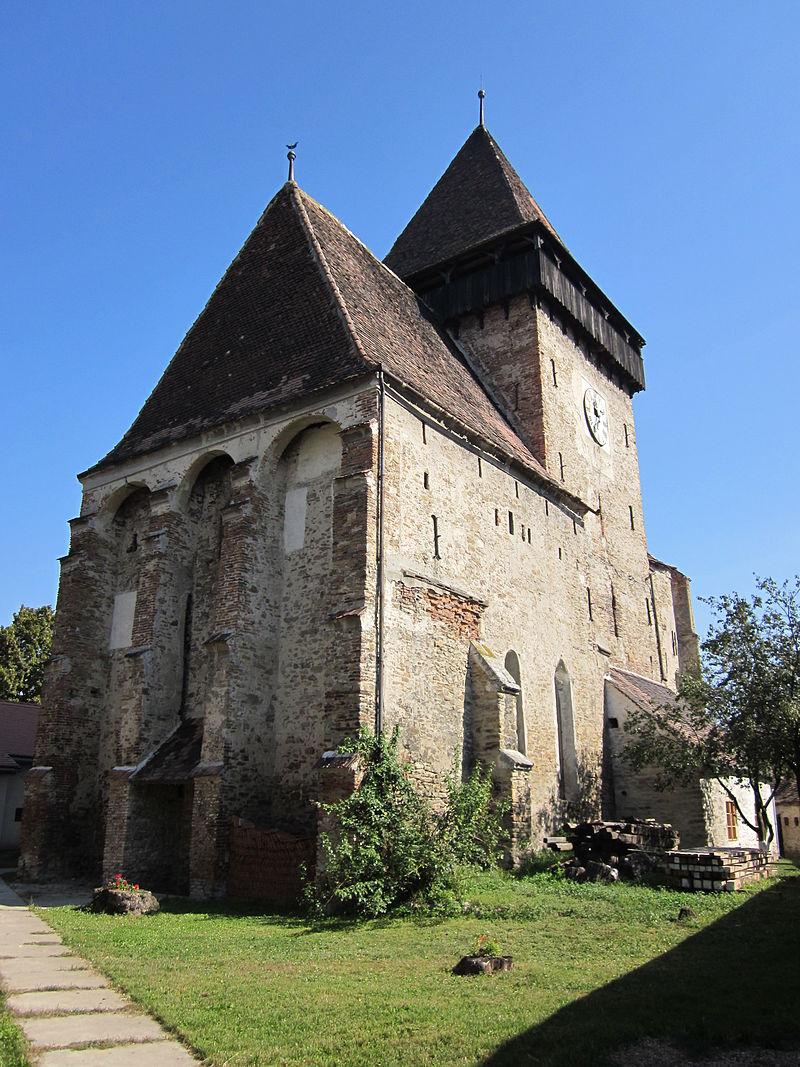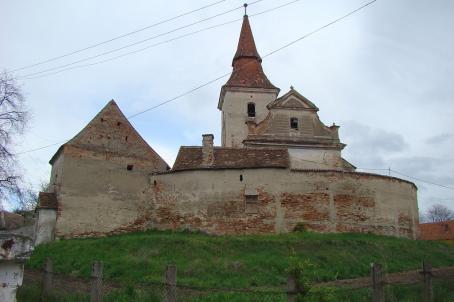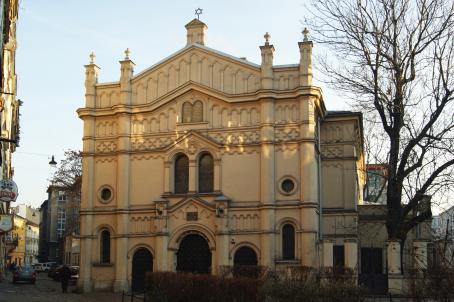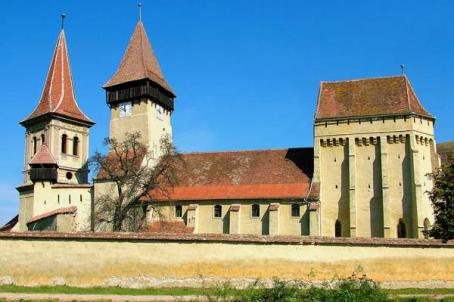Axente Sever Fortified Church

The Evangelic church in Axente Sever is an important witness of the hard times the region had to bare. Therefore not only the ring wall was strengthened for defensive purposes, but the church building itself was also fortified. The massive tower between hall and chancel, dating back to the 14th century has a parapet walk on the highest level and on the first and second floors simple, elongated loopholes that end as a niche towards the interior. Both the chancel and the nave were heightened with defence levels with loopholes. The arches built between the reinforced buttresses on the western facade support the defence level. A portcullis, whose guiding slides are still visible today, protected the western portal. Along the outer wall there are partially preserved and reconstructed storage rooms which are used as guest rooms today.
About this building
For more information visit on this building visit https://kirchenburgen.org/en/location/frauendorf-axente-sever/





